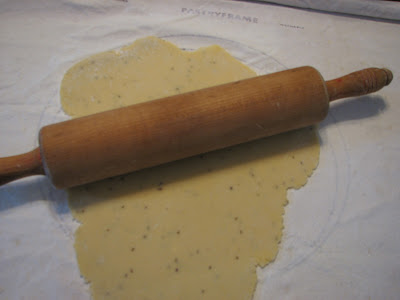Before the holidays I finished an interesting book by frequent New York Times Magazine contributor, Paul Greenberg, entitled Four Fish: The Future of the Last Wild Food. Greenberg is a lifelong fisherman and he clearly struggles with the contradiction of saving fish and their environment, but writing with passion about the thrill of hunting them.
The book is divided into chapters on salmon, sea bass, cod, and tuna – the four fish most prized by consumers and therefore facing drastic reductions to their wild stock. Each section describes basically the same cycle. There were times of abundance, when fish found plenty of prey and nutrients and could freely follow their patterns of migration. As Greenberg put it wild fish seemed to be “a crop, harvested from the sea, that magically grew itself back every year. A crop that never required planting.” Then came pollution and changes in water temperatures, along with blockages to spawning routes, and of course, overfishing. He writes of the drastic decrease of wild populations, the depredations of industrial fishing, and the uncertain efforts to slow the decline by setting catch limits and closing some historic fishing grounds.
Greenberg also examines fish farming, which accounts for most of the salmon and sea bass now sold. He details their unsuccessful efforts to deal with the problems of pollution, genetic contamination that threaten wild stocks, and the question of flavor differences.
He acknowledges that mounting food demand is inevitable. In fact, the world’s per capita consumption of fish has increased from 20 pounds in the 1960s to 36 pounds in recent years. The oceans cannot keep up with our demands. He reluctantly concedes that the solution is fish farming, because otherwise, the pressure on wild stocks will be uncontainable. However, he argues that farming should shift from the four premium fish where it squeezes the wild population, to other species. One example Greenberg provided is tilapia. These fish breed in fresh water, multiply rapidly, and live on a vegetarian diet, thereby reducing the need for the industrial harvesting of the tiny marine life that salmon, cod, bass, and tuna require.
Greenberg also addressed an issue of concern to many contentious eaters. Which fish can we eat without guilt? Unfortunately, this is a question not easily answered by looking at Monterey Bay Aquarium’s seafood-watch card. In truth, he shows, there is rarely such a thing as a good wild fish for any of us to eat, at least not if all of us eat it.
Greenberg lays out the grim realities, but he still manages to sound hopeful about the future of fish, and I feel as though I almost met some of the innovators Greenberg describes who are attempting to deal with the scarcities.
But. for all his defense of innovation and farming, Greenberg without a doubt sides with wild fish. In the case of tuna he calls for the kind of ban that has been applied to whales. “The passion to save the bluefin is as strong as the one to kill them, and these dual passions are often contained within the body of a single fisherman.”
He describes the tension between seeing fish as wildlife versus food. “Wild fish did not come into this world just to be our food,” he argues. “They came into this world to pursue their own individual destinies. If we hunt them and eat them, we must hunt them with care and eat them with the fullness of our appreciation. We must come to understand that eating the last wild food is, above all, a privilege.”
Four Fish is a marvelous exploration of that contradiction, and it is a necessary book for anyone truly interested in what we take from the sea to eat.






































